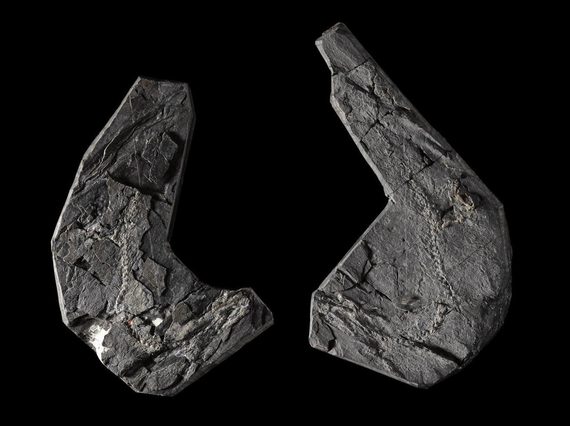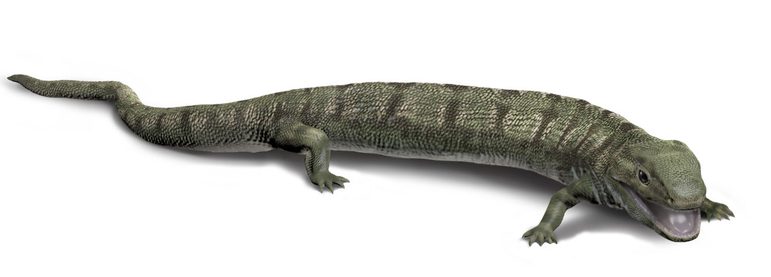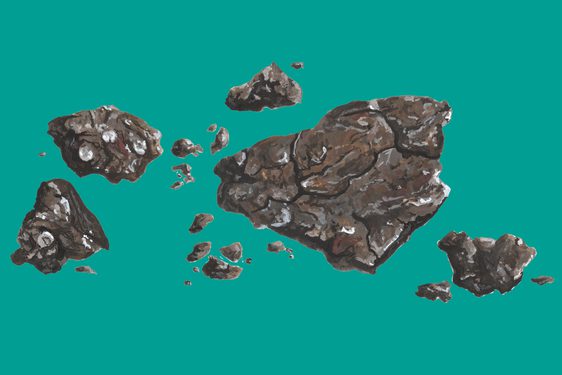
Meet ‘Lizzie’, a 345 million year old fossil
News Story
In the 1980s, a very important fossil was discovered in Scotland. Named Westlothiana, the fossil got its nickname 'Lizzie' because it looked so lizard-like. But don't let the name fool you. It was thought to be the oldest known reptile, but ‘Lizzie’ is not actually a lizard and it is impossible to tell if ‘Lizzie’ was a female.
The discovery of ‘Lizzie’ launched an international scientific debate over whether the fossil was a reptile-like animal or an amphibian.
Amphibians, such as frogs and newts, lay eggs in water and don’t have waterproof skin. Because of this, amphibians must always return to the water to breed, and cannot survive for long in hot and dry environments.
Animals that lay eggs on land have eggs with a waterproof membrane called an ‘amnion’. This amnion prevents the egg from drying out in air, and gives the group its name: the amniotes.
It is impossible to tell just by looking at the fossil skeleton what kind of eggs ‘Lizzie’ laid. Researchers have to reason indirectly by comparing ‘Lizzie’s’ bones with those of both living and fossil amphibians and amniotes. This debate hasn't been setteled. But if ‘Lizzie’ is not the oldest amniote, it is very closely related to the first amniotes.

Where was ‘Lizzie’ found?
‘Lizzie’ was unearthed in East Kirkton quarry, Bathgate, West Lothian. The fossils collected from this tiny quarry give us a rare insight into early terrestrial life. Belonging to the Carboniferous Period (c.359-299 million years ago), the fossils allow us to chart the evolution of tetrapods, which are four-limbed animals with backbones.
Fossils were first discovered at the quarry in the early 19th century. In 1984 self-taught Scottish palaeontologist Stan Wood made new and significant fossil finds. His discoveries marked the global importance of the quarry.
East Kirkton is an unusual place to find fossils. It favours the fossilisation of land animals rather than those that lived in water. 345 million years ago, a small lake was fed by volcanic hot springs rich in dissolved chemicals. These chemicals were deposited as layers of rock on the bottom of the lake, preserving fossil animals and plants.
At East Kirkton, fossils of water-living animals are rare. This is probably because the lake would have been scalding hot or poisonous, but the rocks contain many land-dwelling animals. Fossils such as ‘Lizzie’ are helping scientists unravel the mystery of life on land.
'Lizzie’ (museum reference G.1990.72.1.1) is on display in the Survival gallery at the National Museum of Scotland.


